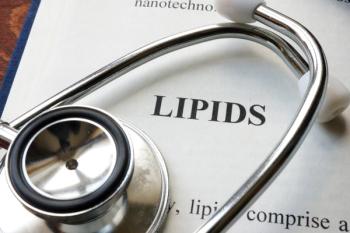
Bone health in adolescents
Bone health in adulthood depends on bone density acquired during adolescence. Identifying risk factors associated with poor bone health early in adolescence can help your teenaged patients take action to maximize bone mass.
Bone health in adulthood depends on bone density acquired during adolescence. Identifying risk factors associated with poor bone health early in adolescence and providing nutrition, exercise, and lifestyle counseling can help your teenaged patients take action to maximize bone mass before their skeletal growth is completed.
Bone serves a dual function as a tissue. First, it’s the structural framework for locomotion, respiration, and organ protection. Second, it acts as a reservoir for calcium, phosphorus, and carbonate. Bone homeostasis is an ongoing process, and although bone can be lost throughout the lifespan, it is only formed during the first several decades of life.1 In fact, an estimated 26% of final adult calcium deposition is established in early adolescence, with peak rates occurring at 12.5 years for girls and 14.0 years for boys.2
Nutrition and bone health
Rapid skeletal growth requires well-balanced nutritional intake, including adequate consumption of calcium and vitamin D. The physiologic timing of adolescent skeletal growth occurs simultaneously with the developing teenager’s increasing independence and autonomy, which can sometimes be at odds with the skeleton’s nutritional needs. As adolescents begin to seek and select foods independent of parental guidance, they do not always prioritize nutritional content.
Studies suggest that adolescents have a limited understanding of the components required for building healthy bones.3 This knowledge deficit may prevent a teenager from selecting appropriate foods high in calcium and vitamin D. A patient with anorexia nervosa is an example of the consequences of extreme nutritional deficiency on the skeleton (see “A case of anorexia nervosa,” page 18). Some of the skeletal losses that occur during the course of that illness may not be reversible.4
Other factors affecting bone health
Aside from nutritional choices, there are other factors that contribute to differences in bone mass. Genetics play an important role, with approximately three-quarters of skeletal phenotypic variance thought to be because of inherited factors.1 In 1 study, family history was the only factor found to be independently associated with stress fracture in active adolescent girls.5
Lifestyle choices can also negatively affect bone health, including minimal physical activity, excessive caffeine and/or carbonated beverage intake, a strict vegetarian diet, high-sodium intake, and cigarette or alcohol use.1,6 Other chronic illnesses during adolescence-in addition to anorexia nervosa-may also compromise bone mass acquisition.1,7
Poor bone health may start in adolescence
In considering bone health during adolescence, the development of osteoporosis in adulthood is often identified as the most serious consequence. However, precursors of the disease may appear during adolescence.
Suspicion for poor bone health should be raised in any adolescent who presents with fracture; however, it can be challenging to determine which adolescent is manifesting true signs of underlying skeletal pathology because fracture is so common in this age group.1,8,9 Isolated fractures involving the peripheral skeleton such as the wrist or ankle may be less likely to cause concern for bone health. However, those involving the axial skeleton such as the hip or spine should trigger an evaluation for underlying bone pathology.7 Similarly, low-impact fractures may signal poor bone health.
It is particularly important to identify adolescents with a low bone density and susceptibility to fracture as early as possible because they can potentially improve their bone mass before skeletal growth is completed.
Initial assessment and risk factors
Pediatricians in general practice should be comfortable evaluating bone health in children and adolescents, and although reaching a conclusive diagnosis might ultimately require the aid of technology, it begins with obtaining a thorough medical and nutritional history. In some cases, there will be other medical pathology that places a patient at risk for poor bone health, as in the case of a patient with anorexia nervosa. In other cases, the suspicion for poor bone health may arise after an adverse event, such as an unexplained fracture. There are several ways to screen for bone health in the outpatient setting (Table 1).7,10-12
Medical history
Early clues to bone health can be gleaned from a thorough general medical history. Has the patient sustained 3 or more fractures in the past? If so, have the fractures affected the peripheral or axial skeleton? Genetics are closely tied to bone health, thus an assessment of family history for fracture or osteoporosis can help to identify at-risk patients.1
Certain medications can predispose adolescents to skeletal losses. For example, medroxyprogesterone has been shown to decrease bone density during its use. However, recent data suggest that these changes may be reversible on discontinuation.10
Nutritional assessment
A careful nutritional assessment is important to assess bone health. As recommended by the American Academy of Pediatrics’ Bright Futures, at least an annual nutritional assessment should take place from early childhood through adolescence.13 This assessment might include questions that address overall nutritional balance throughout the day, regularity of nutritional intake, and specific content within the diet. Asking whether the patient is a “picky eater” might assist in evaluating nutritional variety. In the case of bone health, specific attention should be paid to foods or supplements containing calcium and vitamin D fortification. Moderate protein consumption is also important to consider because the skeleton is composed of a mineralized cartilaginous framework.
A case of anorexia nervosa
A previously healthy 15-year-old girl presents to your clinic for an annual visit. Her last appointment was
1 year ago. Her body mass index has gone from the 50th to the 5th percentile, with a 25-lb weight loss since last year. When asked about her weight loss, she reports that she’s been dieting over the last
6 months after a 5-lb weight gain during soccer season. In describing her dieting habits, she states that she usually skips breakfast, has a piece of fruit and some crackers for lunch, and then has a “normal” dinner with her family. She also reports that she’s been running or biking 5 days a week for about 2 hours each time. Her last period was 3 months ago. When asked about her dieting goal, she reports that she’d like to lose another 10 to 15 lb, in part because people at school have told her that she “looks great.” When you ask about her body image, she states that she doesn’t want to gain any weight back because she already feels like she’s “big enough.”â¨
Physical activity
Physical activity is a critical component of overall health, and bone health in particular relies on weight-bearing activity during the first few decades of life to achieve maximal potential. Athletic pursuits that place a high premium on physical appearance and/or weight (wrestling, dance, long-distance running) should trigger questions about daily nutritional intake and restricting behaviors.
Among girls, restriction may be suggested by secondary amenorrhea, which occurs when athletic energy output significantly exceeds nutritional intake, resulting in an energy deficit.14
In addition to the other benefits of regular physical activity, athletic pursuits often take place outside, where adolescents are exposed to ultraviolet B radiation, thereby increasing vitamin D production. Hours of sun exposure during the day can provide a general guide for vitamin D status. However, seasonal variation in light exposure can be misleading, particularly for persons who live in northern latitudes.
Laboratory assessments
Laboratory evaluation of bone health is generally limited to assessment of physiologic stores of vitamin D, which is best performed by checking serum 25-hydroxyvitamin D (25[OH]D) concentration.15 This metabolite has a 3- to 4-week half-life and thus reflects the body’s vitamin D stores. If the serum 25(OH)D level is less than 20 ng/mL, the patient is considered to be vitamin D deficient; if the result is 21 ng/mL to 29 ng/mL, many experts consider him or her to be vitamin D insufficient. However, there is debate in the field regarding the “optimal” threshold for 25(OH)D, including the presence of 2 recent national guidelines that offer differing recommendations.15,16
Individual serum 25(OH)D levels may vary with seasonal changes: A patient who has a normal level in the middle of the summer may become deficient over the winter months. Although vitamin D screening among the general adolescent population is not recommended, a patient with risk factors (Table 1) should pursue laboratory evaluation in order to ensure timely and adequate treatment of deficiency/insufficiency.7,10,15
Additional laboratory information can be gleaned from hormonal measurements in patients where other signs of poor bone health exist. For example, in the case of the adolescent girl with amenorrhea in anorexia nervosa, one would anticipate low estradiol and androgen levels because of suppression of the hypothalamic-pituitary-gonadal axis. In this setting, skeletal development is arrested, and the body’s calcium stores are accessed through bone resorption without concurrent increased bone formation. Adolescent girls with estrogen deficiency may experience a bone mass decline of 3% to 5% per year.6
Structural evaluation of bone health
The initial evaluation of bone health takes place in the clinician’s office, with measurement of height and weight and consideration of the adolescent’s growth over time. A patient who demonstrates decreased height velocity or decreased weight over time should raise concern for poor bone health.
Dual-energy x-ray absorptiometry
Dual-energy x-ray absorptiometry (DXA) provides a densitometric option and provides a measure of bone mineral content (in grams) with the bone area scanned (in square centimeters). A bone mineral density z score adjusted for age, gender, and often ethnicity is generated. Of note, reference data have been obtained in healthy children and adolescents, but sparse data exist for adolescents with chronic illness. Thus, interpretation of z scores-which provide a 2-dimensional assessment of bone density and therefore can be confounded by bone size-can be challenging.17 For example, in the case of an adolescent with growth deficits and short stature because of chronic disease, DXA results may overestimate skeletal losses. However, DXA is a safe, rapid, and widely used densitometric technique.17 Adolescents should undergo DXA scans when there is a suspicion of a low bone mineral density.7
Research has not clearly demonstrated a relationship between low bone density and future fracture risk in the pediatric population; therefore, pediatricians should be careful in counseling patients and families. An adolescent with a history of multiple fractures may have normal DXA results, and findings from a single DXA assessment cannot be used to promote or deny a diagnosis of osteoporosis.7
Quantitative computed tomography
Recent technology has improved the medical community’s ability to evaluate bone health among adolescents with greater accuracy in the form of axial and peripheral quantitative computed tomography (QCT). These assessment tools provide a measurement of volumetric bone mineral density (in grams per cubic centimeter) and, therefore, are more suitable for the pediatric population whose bone size changes over time and for youth with chronic illness.
Previous research has demonstrated that QCT is more accurate than DXA scanning in the evaluation of bone density in pediatric populations.18 However, the high radiation dose associated with axial QCT has limited its use in general clinical practice.
In contrast, peripheral QCT-especially high-resolution peripheral QCT-examines bone microarchitecture in a more precise way and can identify skeletal changes that occur with physical activity, pubertal development, and/or significant illness.19
Although these technologies are currently available only at academic centers and continue to be explored as diagnostic tools for clinical practice, ongoing research continues to consider whether computerized tomography may enhance diagnostic precision among adolescents in the future.
Treatment options for poor bone health
The most basic, safe, and available treatment options for poor bone health among adolescents include maximizing the body’s supplies of calcium and vitamin D and increasing physical activity (Table 2).1,6,13,15,16 In the case of an adolescent with a chronic illness, the approach in managing bone health relies on treating the primary medical condition.
Calcium
Sufficient calcium intake during adolescence is critical to maximize skeletal growth during the pubertal growth spurt and helps decrease fracture risk in young women.1,20,21
According to recently published guidelines from the Institute of Medicine, the recommended dietary allowance per day for calcium is 700 mg for children aged 1 to 3 years, 1,000 mg for 4- to 8-year-olds, and 1,300 mg for those aged 9 to 18 years.16 Except in those cases where dietary calcium consumption is not possible, calcium requirements should ideally be achieved through the diet.
Calcium supplements are associated with constipation, hypercalciuria, and other adverse effects; therefore, their use should be confined to patients with lactose intolerance with known obstacles to dietary calcium consumption. However, reaching these nutritional goals can be challenging, and supplementation is often an easier way to ensure success in the case of the adolescent who consistently fails to incorporate calcium-rich foods into his or her diet.22
Vitamin D
Vitamin D treatment is the same whether an adolescent is found to have vitamin D deficiency (25[OH]D level <20 ng/mL) or insufficiency (25[OH]D <21-29 ng/mL).15 In both cases, adolescents may take either 2,000 IU daily or 50,000 IU once per week for 6 weeks. Either vitamin D2 or vitamin D3 is effective at raising blood levels to the desired range, although recent research suggests that vitamin D3 is more potent and supports cortical bone mass and strength better than vitamin D2.15,23
After these treatment regimens and for patients who are found to have adequate vitamin D levels but are at risk for poor bone health, sustained supplementation over time of 400 IU to 1,000 IU daily is recommended.15 It is important to recognize that it can be difficult to obtain vitamin D through the diet, especially in a form that is palatable for children and adolescents. Milk is the most convenient vitamin D-fortified food product in the United States, but fortification can be inconsistent among different products. Additionally, milk labels do not always accurately reflect a product’s vitamin D content.
Lifestyle changes
Lifestyle change also plays an important role in restoration of bone health among adolescents. For teenagers who do not follow a regular exercise regimen, providers should help establish a weight-bearing physical activity routine in order to exert biomechanical forces on the bone to promote healthy growth.1,24,25 Current recommendations do not support restriction of athletics to noncontact sports as a method of minimizing fracture risk. However, it is clinically responsible to discuss fracture risk with patients who are found to have a low z score (<–2.0), especially when there is a past history of fracture.
In addition to encouraging physical activity, pediatricians can help to develop a well-rounded nutritional plan that minimizes sodium intake, caffeine, and carbonated beverages and provide counseling about avoidance or cessation of cigarettes and alcohol in order to support healthy skeletal growth.
Prevention
Pediatricians can help optimize adolescent bone health by providing nutritional screening and focusing on early identification of comorbid conditions that jeopardize bone health. For the adolescent or parent, several key steps can be made toward optimizing bone health during the second decade of life.
First, paying attention to nutritional intake on a daily basis will lead to gradual improvement of bone health. This includes recommending a well-balanced diet incorporating calcium- and vitamin D-fortified foods. Children older than 1 year and adolescents who do not have specific risk factors for poor bone health should maintain a minimum daily vitamin D intake of 600 IU and the recommended age-appropriate daily calcium intake.15,16
Second, encouraging regular weight-bearing exercise will also enhance bone density and microarchitecture during adolescent development. Pediatricians can help craft and reinforce an activity plan that minimizes sedentary activity, such as television and video games, as much as possible. Endorsing outdoor pursuits has the benefit of encouraging both physical activity and endogenous vitamin D production in the adolescent.
Finally, providers should be sure to counsel their adolescent patients about avoiding tobacco products and alcohol in the interest of optimizing bone health.
REFERENCES
1.Heaney RP, Abrams S, Dawson-Hughes B, et al. Peak bone mass. Osteoporos Int. 2000;11(12):985-1009.
2. Bailey DA, Martin AD, McKay HA, Whiting S, Mirwald R. Calcium accretion in girls and boys during puberty: a longitudinal analysis. J Bone Miner Res. 2000;15(11):2245-2250.
3. Martin JT, Coviak CP, Gendler P, Kim KK, Cooper K, Rodrigues-Fisher L. Female adolescents’ knowledge of bone health promotion behaviors and osteoporosis risk factors. Orthop Nurs. 2004;23(4):235-244.
4. Misra M, Prabhakaran R, Miller KK, et al. Weight gain and restoration of menses as predictors of bone mineral density change in adolescent girls with anorexia nervosa-1. J Clin Endocrinol Metab. 2008;93(4):1231-1237.
5. Loud KJ, Micheli LJ, Bristol S, Austin SB, Gordon CM. Family history predicts stress fracture in active female adolescents. Pediatrics. 2007;120(2):e364-e372.
6. Mehler PS, Andersen AE. Eating Disorders: a guide to medical care and complications. 2nd ed. Baltimore, MD: Johns Hopkins University Press; 2010:144-154.
7. Bishop N, Braillon P, Burnham J, et al. Dual-energy X-ray absorptiometry assessment in children and adolescents with diseases that may affect the skeleton: the 2007 ISCD Pediatric Official Positions. J Clin Densitom. 2008;11(1):29-42.
8. Hedström EM, Svensson O, Bergström U, Michno P. Epidemiology of fractures in children and adolescents. Acta Orthop. 2010;81(1):148-153.
9. Khosla S, Melton LJ 3rd, Dekutoski MB, Achenbach SJ, Oberg AL, Riggs BL. Incidence of childhood distal forearm fractures over 30 years: a population-based study. JAMA. 2003;290(11):1479-1485.
10. Harel Z, Johnson CC, Gold MA, et al. Recovery of bone mineral density in adolescents following the use of depot medroxyprogesterone acetate contraceptive injections. Contraception. 2010;81(4):281-291.
11. Yu EW, Bauer SR, Bain PA, Bauer DC. Proton pump inhibitors and risk of fractures: a meta-analysis of 11 international studies. Am J Med. 2011;1124(6):519-526.
12. Weller EB, Weller RA, Kloos AL, Hitchcock S, Kim WJ, Zemel B. impact of depression and its treatment on the bones of growing children. Curr Psychiatry Rep. 2007;9(2):94-98.
13. Hagan JF Jr, Shaw JS, Duncan PM, eds. Bright Futures: Guidelines for Health Supervision of Infants, Children, and Adolescents. 3rd rev ed. Elk Grove Village, IL: American Academy of Pediatrics; 2008:515-575.
14. Gordon CM. Clinical practice. Functional hypothalamic amenorrhea. N Engl J Med. 2010;363(4):365-371.
15. Holick MF, Binkley NC, Bischoff-Ferrari HA, et al; Endocrine Society. Evaluation, treatment, and prevention of vitamin D deficiency: an Endocrine Society clinical practice guideline. J Clin Endocrinol Metab. 2011;96(7):1911-1930. Erratum in: J Clin Endocrinol Metab. 2011;96(12):3908.
16. Institute of Medicine. DRI: Dietary Reference Intakes: Calcium, Vitamin D. Washington, DC: National Academies Press; 2011.
17. Gordon CM, Bachrach LK, Carpenter TO, et al. Dual energy X-ray absorptiometry interpretation and reporting in children and adolescents: the 2007 ISCD Pediatric Official Positions. J Clin Densitom. 2008;11(1):43-58.
18. Wren TA, Liu X, Pitukcheewanont P, Gilsanz V. Bone densitometry in pediatric populations: discrepancies in the diagnosis of osteoporosis by DXA and CT. J Pediatr. 2005;146(6):776-779.
19. Zemel BS. Quantitative computed tomography and computed tomography in children. Curr Osteoporos Rep. 2011;9(4):284-290.
20. Greene DA, Naughton GA. Calcium and vitamin-D supplementation on bone structural properties in peripubertal female identical twins: a randomised controlled trial. Osteoporos Int. 2011;22(2):489-498.
21. Nieves JW, Melsop K, Curtis M, et al. Nutritional factors that influence change in bone density and stress fracture risk among young female cross-country runners. PM R. 2010;2(8):740-750.
22. Ma NS, Gordon CM. Pediatric osteoporosis: where are we now? J Pediatr. 2012;161(6):983-990.
23. Sayers A, Fraser WD, Lawlor DA, Tobias JH. 25-hydroxyvitamin-D3 levels are positively related to subsequent cortical bone development in childhood: findings from a large prospective cohort study. Osteoporos Int. 2012;23(8):2117-2128.
24. Dias Quiterio AL, Carnero EA, Baptista FM, Sardinha LB. Skeletal mass in adolescent male athletes and nonathletes: relationships with high-impact sports. J Strength Cond Res. 2011;25(12):3439-3447.
25. Farr JN, Blew RM, Lee VR, Lohman TG, Going SB. Associations of physical activity duration, frequency, and load with volumetric BMD, geometry, and bone strength in young girls. Osteoporos Int. 2011;22(5):1419-1430.â¨
Newsletter
Access practical, evidence-based guidance to support better care for our youngest patients. Join our email list for the latest clinical updates.














